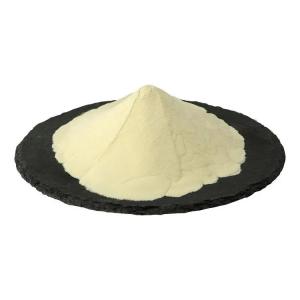Phosphatidyl serine is used in fortified cereal blends.
Time:2025-07-29Phosphatidylserine (PS) is a phospholipid commonly found in cell membranes, particularly in the brain. In recent years, it has been increasingly incorporated into functional foods, including fortified cereal blends, due to its desirable characteristics and compatibility with a wide range of ingredients.
Role in Fortified Cereal Blends
Fortified cereal blends are designed to deliver enhanced nutritional profiles through the inclusion of specific compounds. Phosphatidylserine is used in these blends for its structural stability and its ability to blend well with both dry and extruded products. Its inclusion is particularly suitable for products targeted at adults, students, and individuals seeking advanced nutrition from convenient, ready-to-eat formats.
Formulation Considerations
In cereal blends, phosphatidylserine is typically microencapsulated or added as part of a lipid matrix to ensure its stability during processing and storage. It can be combined with grains, plant-based proteins, dried fruits, and other functional ingredients. PS is heat-sensitive, so formulations often avoid high-temperature extrusion or use controlled processing methods to preserve its integrity.
Application Scenarios
Phosphatidylserine-fortified cereals are often used in breakfast products, snack bars, and powdered mixes. These applications offer consumers a simple delivery format with a familiar taste and texture. The use of PS is often aligned with other fortification strategies, such as the addition of vitamins, minerals, omega-3 fatty acids, or plant extracts.
Market Outlook
As the demand for functional foods continues to grow, phosphatidylserine is becoming a popular ingredient in premium and performance-oriented cereal products. It is particularly attractive in markets emphasizing cognitive nutrition, aging wellness, and proactive dietary routines.
In summary, phosphatidylserine contributes added value to fortified cereal blends by enhancing the nutritional appeal and market positioning of these products. Its adaptability in formulations makes it a useful component for manufacturers targeting health-conscious consumers.
Phosphatidylserine in Fortified Cereal Blends
Phosphatidylserine (PS) is a naturally occurring phospholipid commonly found in cell membranes, especially in the brain. In recent years, it has been incorporated into various functional foods, including fortified cereal blends, due to its favorable physical properties and compatibility with nutritional formulations.
Application in Cereal Blends
Fortified cereal blends are designed to deliver additional nutritional benefits through the inclusion of selected ingredients. Phosphatidylserine can be added to these blends in powder or encapsulated form, allowing it to integrate well with dry cereals, multigrain flakes, granola, and powdered drink mixes. Its presence supports the trend toward enhanced, convenient, nutrient-dense foods.
Formulation and Processing
Phosphatidylserine is typically added during the blending stage, and in some cases, it is microencapsulated to improve stability and protect it from heat or oxidation during processing. This makes it suitable for applications such as instant breakfast cereals, nutritional drink powders, or ready-to-eat cereal bars. When used in dry blends, it is important to ensure even distribution to maintain consistent quality.
Compatibility with Other Ingredients
PS can be combined with a variety of other fortified ingredients such as vitamins, minerals, plant-based proteins, and fiber. It does not significantly alter the taste or texture of the final product, which makes it a versatile choice for manufacturers. Its lipid nature allows for smooth blending in recipes that contain oils or emulsifiers.
Market Potential
The inclusion of phosphatidylserine in cereal blends aligns with consumer demand for functional foods that support balanced nutrition and wellness lifestyles. It is often found in premium cereals targeted toward professionals, students, or active individuals looking for advanced nutritional options in everyday foods.
Conclusion
Phosphatidylserine enhances the value of fortified cereal blends by providing formulation flexibility and supporting product differentiation in the functional food category. Its integration into cereal-based systems reflects a growing interest in multi-functional ingredients that fit into modern, health-conscious diets.


 CN
CN





